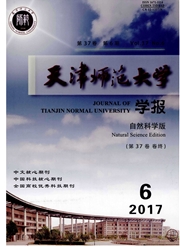

 中文摘要:
中文摘要:
为了研究地表朗伯假设对反照率遥感反演的影响作用,取各BRDF原型类作为地表反射各向畀胜的基本样式,将模拟方向反射率数据作为朗伯假设反照率,借助一景MODIS图像的BRDF/反照率产品,分析其与反照率在观测空间分布特征上的相对差异.结果表明:朗伯假设对地表反照率的影响与地表反射各向异性样式、太阳天顶角大小以及观测所在空间位置等密切相关.当地表反射各向畀性恃征较显著时,朗伯假设会在后向热点、前向冷点以及较大的观测天顶角附近向反照率中引入40%以上的误差,且随着太阳天顶角的增大,这一差异还会显著增加.此外,天顶方向反射率与反照率的差异同样与地表反射各向异性特征和太阳天顶角大小密切相关.当太阳天顶角较小时,几何光学散射作用较强的BRDF原型类会高估地表反照率;当太阳天顶角较大时,体散射作用较强的BRDF原型类会明显低估地表反照率.
 英文摘要:
英文摘要:
In order to investigate the effect of Lambertian assumption on albedo retrieval from remote sensing images, dif- ferent BRDF archetypes were taken as the basiccharacteristicsof surface reflectance anisotropy, and the simulated direction- al reflectance were assumed to be the albedo under the Lambertian assumption. Based on the one scene of the MODIS BRDF/albedo products, the distribution characteristics of relative difference between the simulated directional reflectance and MODIS albedo over the viewing hemisphere were discussed. The results showed that the effect of Lambertian assumption on albedo is closely related to the pattern of reflectance anisotropy and the sun-view geometry. When the ground has remark- able reflectance anisotropy, the errors caused by Lambertian assumption can reach up to 40% around hotspot, darkspot and large viewing zenith area, and this impact increases with the increase of solar zenith angle. The difference between nadir re- flectance and albedo is also related to the pattern of reflectance anisotropy and the sun-view geometry. The BRDF archetypes that have a strong geometric scattering usually overestimate albedo under small solar zenith angle, while the BRDF archetypes that have a strong volumetric scattering usually underestimate albedo under large solar zenith angle.
 同期刊论文项目
同期刊论文项目
 同项目期刊论文
同项目期刊论文
 期刊信息
期刊信息
